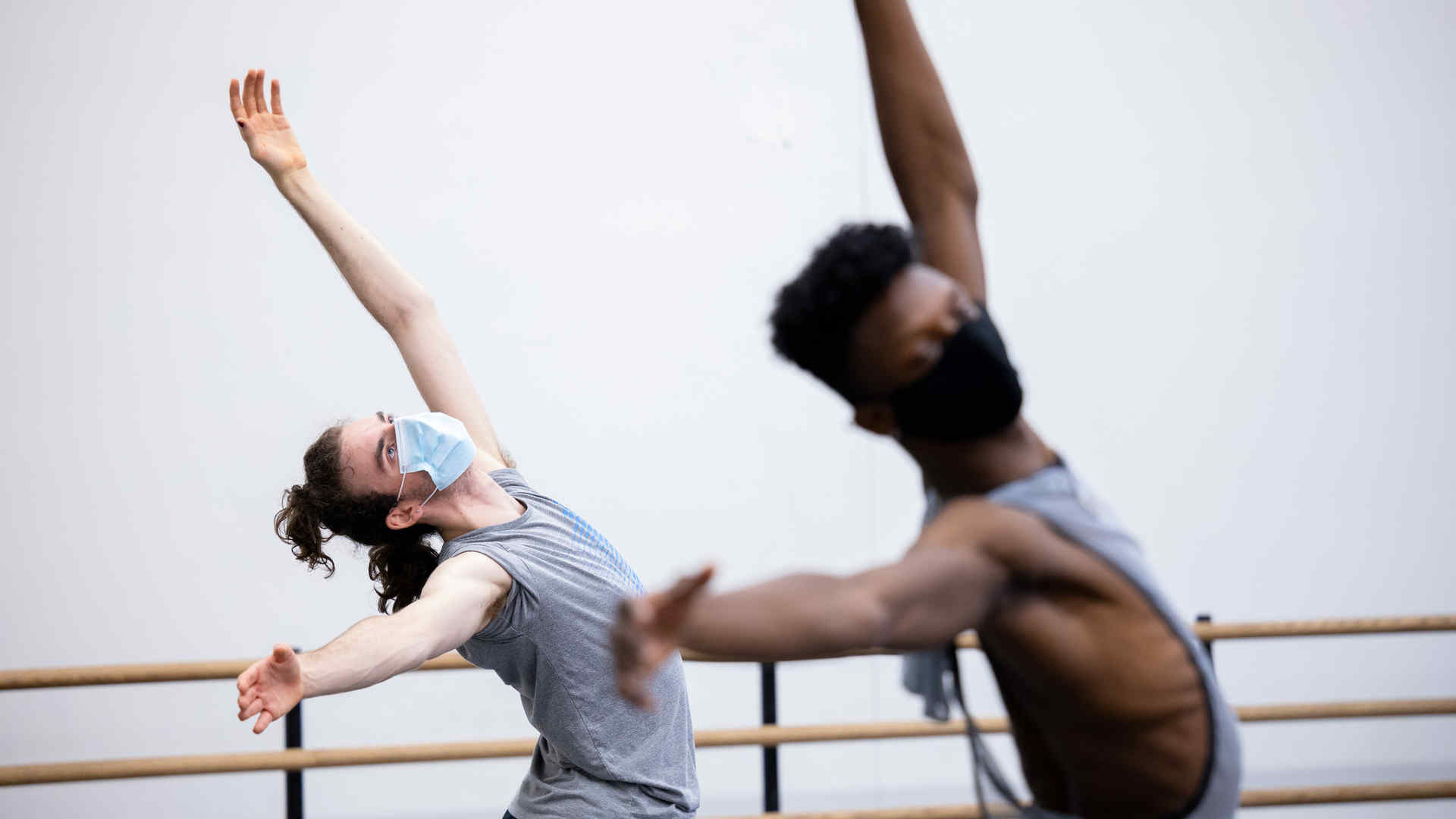
Balancing an exceptional education with a safe environment
“What valuable things might we do now that we wouldn’t ordinarily focus on?” President Damian Woetzel’s question has inspired creative thinking in a year that has forced community members from the youngest Pre-College and MAP students to the most venerable faculty members to work together to rethink, renew, and revise as they adapt to the reality of remote learning. Creating an academic year that balances exceptional education with a safe environment hasn’t been easy, but “our students have embraced this new structure, proving once again that they will rise to any challenge. That’s what great artists do—they adapt and they keep creating,” said Provost Adam Meyer (MM ’04, viola).
To help achieve the twin goals of excellence in teaching and learning as well as the highest possible safety standards, the fall term was divided into three blocks as progressively more students returned to campus while others continued remote learning. Building use was completely redesigned to help make movement and practice room and classroom use as safe and seamless as possible. The residence hall opened with just one student per room. Lessons and rehearsals were conducted via Zoom. The Drama Division sent matching props, green screens, and Ethernet cables around the world so students could perform together whether they were in the Diamond Building or Australia. The New Dances choreographers began working, whether remotely or in-person, with the dancers and using the limitations of the moment to stretch the boundaries of their work. A record number of students took advantage of the opportunity to take secondary Historical Performance instrument lessons. The conducting students made videos of themselves silently conducting an excerpt from a Haydn concerto and then 12 instrumentalists recorded themselves playing their parts based only on the conductors’ cues—a truly unique learning experience for all. As a quarantine dividend, all the disciplines were able to welcome more experts than usual from around the world to lead master classes and intensives through remote learning. And there has been a schoolwide effort to seek out, study, and perform the works of a more diverse array of artists.
This year Juilliard also launched its first summer school program in decades, and it proved to be extremely popular and successful. Created quickly to take advantage of the moment, it included traditional for-credit courses (available at no additional cost). In the absence of the usual flurry of summer performance activities, many students took advantage of this opportunity to get ahead in their schoolwork. Another innovation was Camp Juilliard, which featured courses including Prospects for Democracy in a Post-Pandemic World; The New Deal: A Blueprint for Economic Recovery and Artistic Innovation; What Does a Philosopher Do?; Hamilton and History; The Great Migration; a look at the PBS documentary Asian Americans; and a virtual museum tour. The energy continued this fall with a nonpartisan series called Camp Juilliard: The Election Version, which ended a week before Election Day.
Despite a global situation that’s changing by the week—or hour—“artists can’t be stopped in their desire to engage and grow,” as Ara Guzelimian, interim dean and director of music, said. The whole community has been inventing nonstop to help them do so.